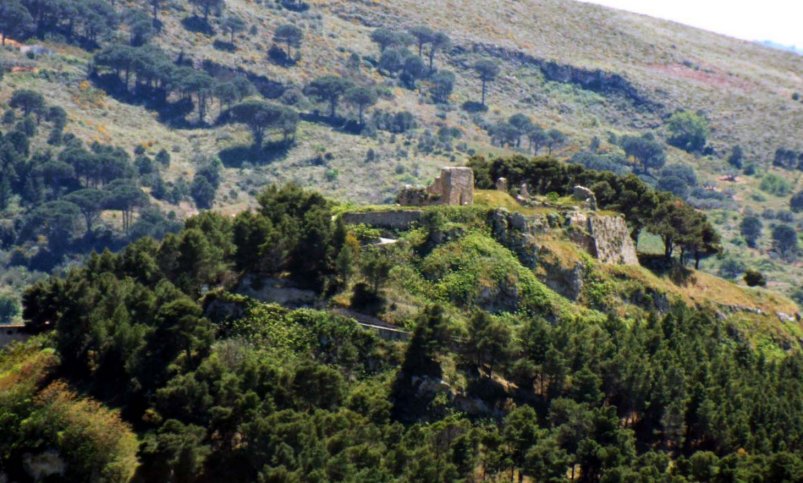Eufemio

Euphemius was a Byzantine commander who brought Saracens to help
him in his
Sicilian revolt in 827, thus starting the Muslim occupation of the
island. In the mid twelfth century the Arab traveller and
geographer Idrisi described Eufemio as an ‘ancient castle'
with ‘a populated village'. This supports a possible
Byzantine foundation date for the castle. The fortress would
appear
to have remained royal under the Normans and the Emperor Frederick II
(d.1250)
utilised it in his fight against the local Muslim rebels in the
1220s. As such it was used to besiege the nearby village of
Calatabarbaro with its castle of Calatafimi, on top of the acropolis of Segesta.
Afterwards,
presumably when the trouble was passed, the castle was granted to the
feudal lords of Calatafimi. In 1282, at the start of the
Sicilian Vespers, the French lord of the castle, William Porcelet, due
to the esteem he was held in by his subjects because of his benevolence
and justice, was escorted from the castle with his family to Palermo 30
miles away where he embarked for Provence, never to return. It
then reverted to being a royal fortress and then a prison until 1868,
when it was
abandoned.
Description
The castle occupies a rock dominating the west side of
Calatafimi-Segesta. The heart of the castle is a thick walled
hall keep about 45' east to west by 35' north to south standing towards the north end of
the site. The south and west walls of the keep still stand some 30' high
and were entered via 2 ground floor doorways from the inner courtyard
to the
west and southwest. Both their strongly pointed arches have been
recently rebuilt. The quoining on the southwest corner has also been
replaced, the lower part recently, the upper part probably in the
middle ages. The rest of the tower is rubble built, including
the corners.
The main outer defences on this side and to the east, where the modern
entrance and probably the original gate was, are now mainly
down. To the south and west the ruins are better preserved and
show a rectangular agglomeration of buildings which proceed down the
rock face. In style it is somewhat similar to the remains on
the hill above of the supposedly thirteenth century fortress on the
hill above at Calatafimi-Segesta and that on the hill at Cefalu.
Towards the southern end of the site is another rectangular tower,
smaller than the hall keep to the north, and with thinner walls and an
entrance to the west. An eastern curtain once joined the 2
towers and just north of the south tower is a rectangular gatetower
which gave access via its 2 pointed archways and a gate passageway into
the inner courtyard between the 2 great towers. The courtyard
allowed access to the later prison on the south side in which the
prisoners' graffiti still remains. Water cisterns remain
along the western cliff face. The bulk of the remains are
rubble built and contain few Roman tiles or bricks, unlike other early
sites, viz. Aci, Calatabianco, Castelmola, Castronovo, Cefala Diana (slight),
Cefalu (slight), Erice, Francavilla, Geraci Siculo, Milazzo, Mistretta, Nicosia, Rometta, Sperlinga and Vicari.
Why not join me here and at other Sicilian
castles? Information on this and other tours can be found at Scholarly
Sojourns.
Copyright©2019
Paul Martin Remfry

